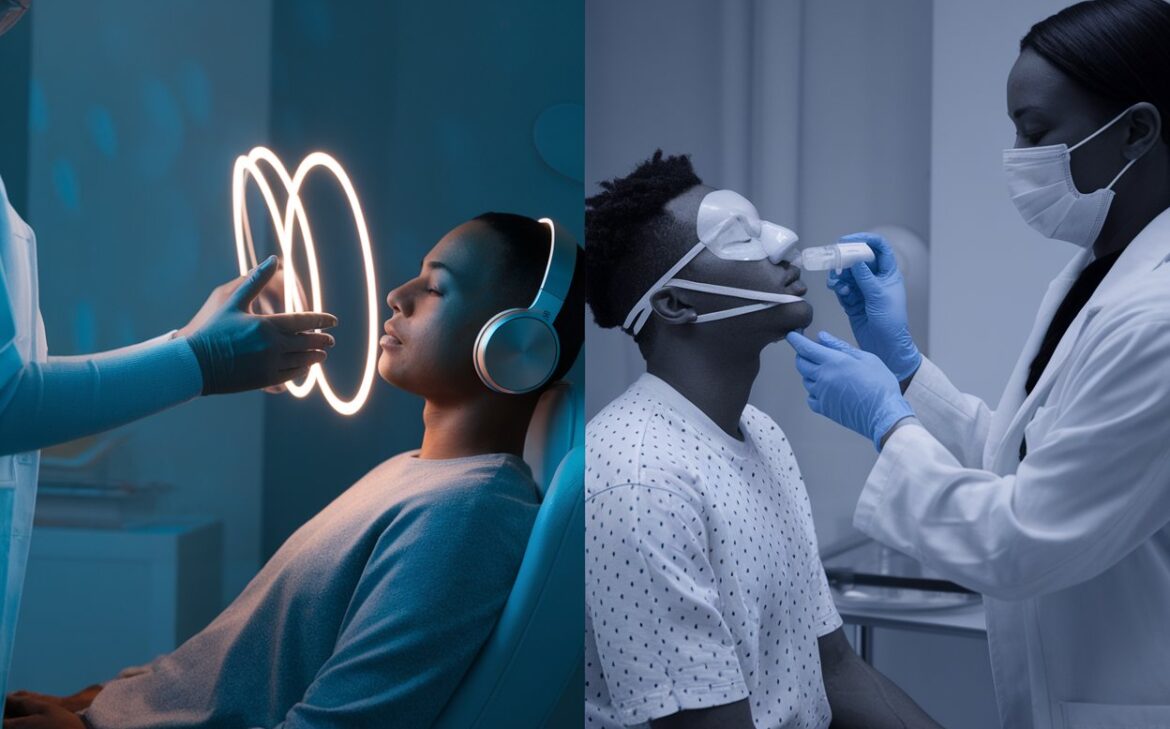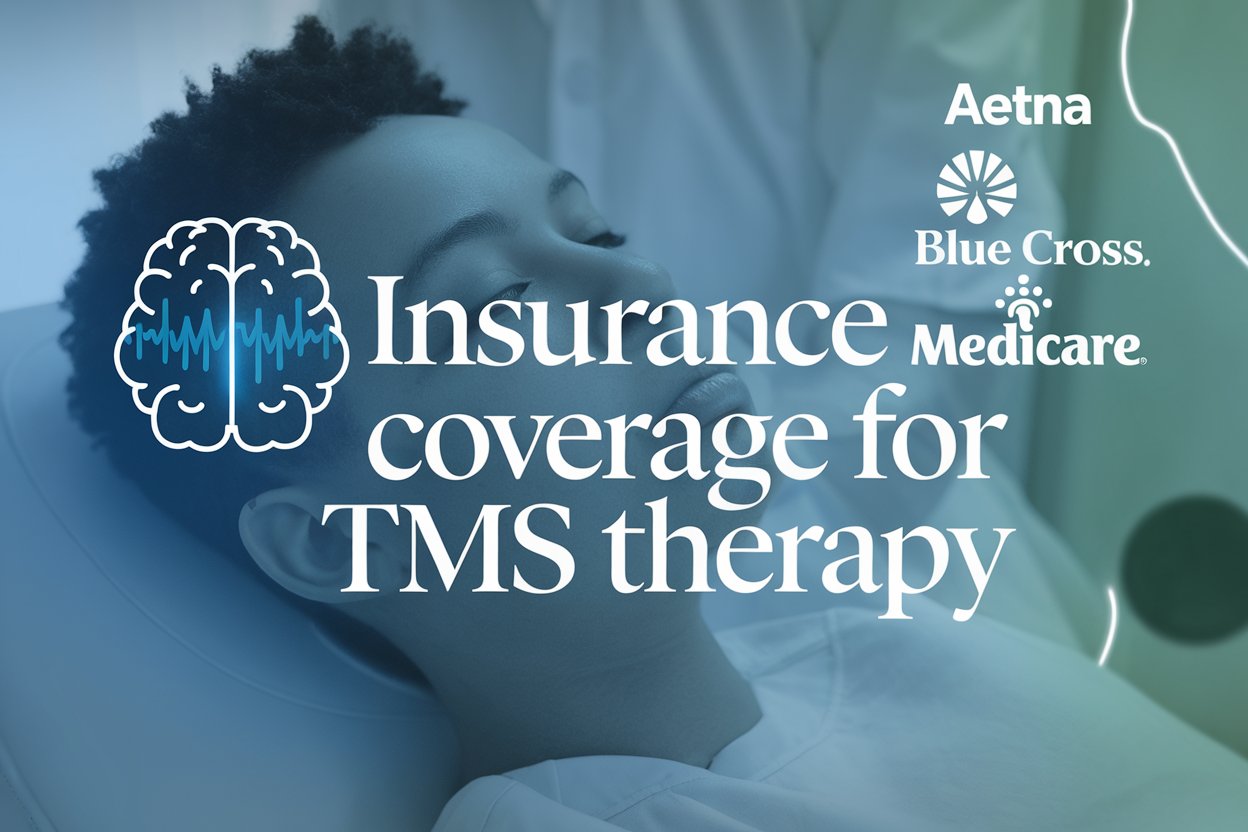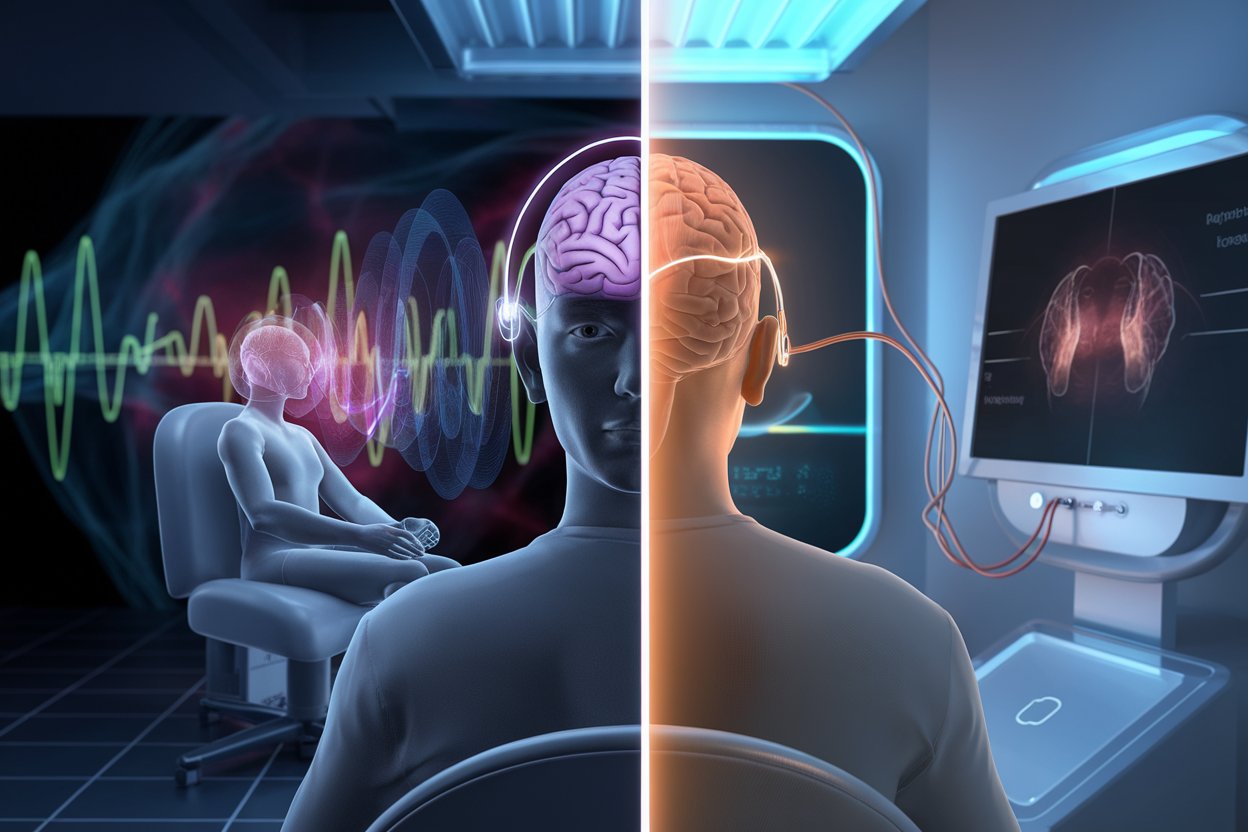Finding the right treatment for depression can be tough, especially when traditional medications fail to work. For people with treatment-resistant depression, TMS Therapy vs Esketamine are two options that may offer hope. Both therapies have unique benefits, but which is more effective? In this article, we will compare the effectiveness and benefits of TMS Therapy and Esketamine to help you make an informed decision.
What is TMS Therapy?
Transcranial Magnetic Stimulation (TMS) is a non-invasive treatment that uses magnetic fields to stimulate nerve cells in the brain. It is mainly used to treat depression, especially for those who haven’t responded well to medications. TMS works by placing a magnetic coil on the scalp, which sends pulses to specific areas of the brain that control mood.
TMS treatment is typically given five times a week for four to six weeks. Each session lasts around 20-40 minutes, and it doesn’t require anesthesia or recovery time. TMS is also FDA-approved for treating major depressive disorder and has shown positive results in improving mood and reducing symptoms.
Key Benefits of TMS Therapy
- It is non-invasive and does not require medication.
- Minimal side effects like mild scalp discomfort or headaches.
- No anesthesia, allowing patients to resume daily activities immediately.
- It was shown to improve symptoms in 50–60% of patients with TRD.
What is Esketamine?
Esketamine, also known as Spravato, is a prescription nasal spray derived from ketamine. It is used for treating treatment-resistant depression and major depressive disorder with suicidal thoughts. Esketamine affects glutamate receptors in the brain, which helps improve communication between brain cells and enhances mood.
Esketamine is administered under supervision at a certified clinic, usually two times a week for the first four weeks, followed by once-weekly or bi-weekly maintenance sessions. Patients are required to stay at the clinic for at least two hours after administration to monitor any side effects.
Key Benefits of Esketamine
- Provides rapid relief, sometimes within hours.
- Ideal for severe depression and suicidal thoughts.
- Administered under medical supervision for safety.
- Enhances the effects of traditional antidepressants.
Key Differences Between TMS Therapy and Esketamine
This section highlights the key differences between TMS therapy and Esketamine in terms of treatment process, mechanism of action, invasiveness, frequency, and side effects. Here is a quick comparison:
| Aspect | TMS Therapy | Esketamine |
| Type of treatment | Non-invasive brain stimulation | Nasal spray medication |
| Mechanism of Action | Stimulates neural activity via magnetic pulses | Targets NMDA receptors to promote neural growth |
| Frequency of Treatment | 5 days a week for 4–6 weeks | Twice a week for 4 weeks, then as needed |
| Side Effects | Mild headaches, scalp discomfort | Dissociation, sedation, nausea, increased blood pressure |
| Ideal For | Treatment-resistant depression, co-occurring anxiety | Severe depression with suicidal ideations |
| FDA Approval | Depression, OCD, anxiety | Treatment-resistant depression, major depressive disorder with suicidal ideations |
Effectiveness of TMS Therapy
TMS Therapy is effective for people with treatment-resistant depression. It works by stimulating brain areas that are underactive in people with depression. Clinical studies show that TMS can reduce symptoms significantly, with some patients experiencing complete remission. TMS is particularly effective for those who have not responded to antidepressant medications, and it also has fewer side effects compared to other treatments.
Benefits of TMS Therapy
- Non-invasive: No need for anesthesia or surgery.
- Minimal Side Effects: Most patients experience mild headaches or scalp discomfort.
- Long-Lasting Results: Many patients report long-term improvement in their symptoms after completing a full course of treatment.
Effectiveness of Esketamine
Esketamine is known for its fast-acting effects, which can provide relief within hours or days. This is particularly beneficial for people experiencing severe depression or suicidal thoughts. Esketamine works by enhancing the growth of brain connections, helping to reverse the effects of depression. However, it must be used alongside an oral antidepressant, and the long-term effects are still being studied.
Benefits of Esketamine
- Rapid Relief: Often works within hours, making it ideal for severe cases.
- FDA-Approved: Approved for treatment-resistant depression and major depressive disorder with suicidal ideations.
- Improves Brain Connectivity: Helps regrow brain connections affected by depression.
Comparing Effectiveness: TMS Therapy vs Esketamine
Both TMS Therapy vs Esketamine have their own strengths in treating depression, but their effectiveness may vary depending on the individual. TMS is highly effective for those with treatment-resistant depression and offers long-term benefits with minimal side effects. Esketamine, on the other hand, provides rapid relief, making it suitable for those with severe symptoms or suicidal thoughts.
Clinical studies show that about 50-60% of patients respond well to TMS, while 30-40% achieve full remission. For Esketamine, the response rate is also around 50%, with many patients experiencing significant symptom reduction. However, Esketamine requires ongoing maintenance, and its long-term safety profile is still being evaluated.
Safety and Side Effects
- TMS Therapy: Generally safe with mild side effects like headaches or scalp discomfort. Rarely, it may cause seizures in people with a history of epilepsy.
- Esketamine: Common side effects include nausea, dizziness, dissociation, and an increase in blood pressure. Due to the risk of dissociation, patients are monitored for two hours after treatment.
Factors to Consider When Choosing Between TMS Therapy and Esketamine
- Individual Health Needs: TMS may be better for those who want a non-medication option, while Esketamine is suitable for those needing rapid relief.
- Treatment Availability: TMS is available at specialized clinics, while Esketamine is offered at certified centers under strict supervision.
- Insurance and Cost: TMS is often covered by insurance, whereas Esketamine may require additional approvals or out-of-pocket expenses.
- Personal Preference: TMS is a more structured treatment with daily sessions, while Esketamine requires fewer but longer sessions due to monitoring.
Long-Term Outcomes and Maintenance
TMS Therapy often results in lasting symptom relief, with many patients reporting improvements that last for up to a year after treatment. Some individuals may require maintenance sessions, but these are typically less frequent.
Esketamine requires ongoing maintenance sessions to maintain its effects. Patients usually continue with weekly or bi-weekly treatments after the initial phase. This ongoing need for maintenance is a key difference between Esketamine and TMS.
Can TMS Therapy and Esketamine Be Used Together?
Yes, TMS and Esketamine can be used together in certain cases. Some patients may benefit from combining these treatments to achieve better results, especially if they have not responded to other forms of treatment. It is important to consult with a healthcare provider to determine the best approach for your specific needs.
Which is More Effective: TMS Therapy vs Esketamine?
Choosing between TMS Therapy vs Esketamine depends on several factors, including the severity of symptoms, personal preferences, and medical history. TMS is a great option for those who prefer a non-invasive treatment with long-term benefits and fewer side effects. Esketamine, on the other hand, is ideal for those needing rapid relief, especially in cases of severe depression or suicidal ideation.
It is also important to consider the commitment required for each treatment. TMS requires more frequent sessions initially, while Esketamine involves fewer sessions but requires ongoing maintenance. The choice between these treatments should be made in consultation with a healthcare professional who can guide you based on your specific needs.
Conclusion
In the battle of TMS Therapy vs Esketamine, there is no one-size-fits-all answer. Both treatments offer unique benefits and have been proven effective for individuals with treatment-resistant depression. TMS provides a non-invasive option with long-lasting effects and minimal side effects, while Esketamine offers rapid relief for severe symptoms.
Consulting with a healthcare provider is crucial in determining the best treatment for your needs. Whether you choose TMS, Esketamine, or a combination of both, the goal is to find a treatment that helps you regain control of your life and improve your mental health.
Ready to Take the Next Step in Your Depression Treatment?
Struggling with treatment-resistant depression? American TMS Clinics offers hope through non-invasive TMS therapy. Learn more about how TMS can help you regain control of your life. Visit American TMS Clinics to schedule your consultation Today.





